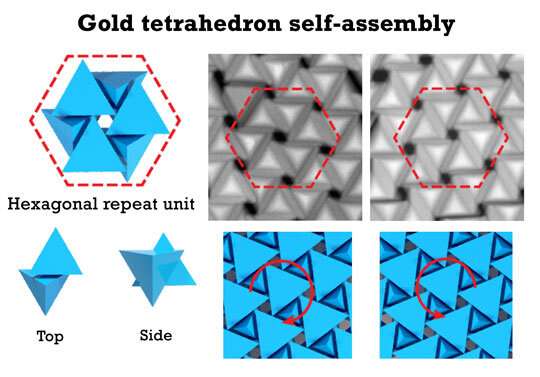Will no one stand up for aerohead's side. He's really taken the wind out of climate change.

So now this thread becomes something of an outlier. What else do people talk about when they're not being monomaniacal about effciency?
Maybe nano-scale metamaterials?
phys.org: At the water's edge: Self-assembling 2D materials at a liquid–liquid interface
Quote:
The past few decades have witnessed a great amount of research in the field of two-dimensional (2D) materials. As the name implies, these thin film-like materials are composed of layers that are only a few atoms thick...
Coordination nanosheets are one particularly interesting type of 2D material. The "coordination" refers to the effect of metallic ions in these molecules, which act as coordination centers. These centers can spontaneously create organized molecular dispositions that span multiple layers in 2D materials. This has attracted the attention of materials scientists due to their favorable properties. In fact, we have only begun to scratch the surface regarding what heterolayer coordination nanosheets—coordination nanosheets whose layers have different atomic composition—can offer.
In a recent study ... reported a remarkably simple way to synthesize heterolayer coordination nanosheets. Composed of the organic ligand, terpyridine, coordinating iron and cobalt, these nanosheets assemble themselves at the interface between two immiscible liquids in a peculiar way.
|
phys.org/Bottom-up construction with a 2D twist could yield novel materials
Quote:

Tetrahedron-shaped nanoparticles are interesting enough by themselves, but under the right circumstances, Rice University scientists have discovered they do something remarkable.
While doing a routine check on a batch of tiny gold tetrahedrons, Rice chemist Matthew Jones and graduate student Zhihua Cheng found their microscopic particles had the unanticipated ability to arrange themselves into 2D chiral superstructures.
|
phys.org: New glass-ceramic emits light when under mechanical stress
Quote:
Researchers have created a new glass-ceramic that emits light in response to mechanical stress, a property known as mechanoluminescence. With further development, the new material could be used to create a light source that is switched on by mechanical stress. This could be useful for monitoring stress in artificial joints in the body or providing warnings of dangerous stress or fractures in buildings, bridges and other structures.
"Most materials exhibiting mechanoluminescence have been made as powders, which aren't very versatile," said research team leader Lothar Wondraczek from Friedrich Schiller University Jena in Germany. "We designed a glass-ceramic material with mechanoluminescence, which allows glass-like processing approaches to be used to form virtually any shape—including fiber, beads or microspheres—that can be incorporated into various components and devices."
|
Squeezing chirality out of tetrahedrions remind me of Bucky Fuller's [and Mother Nature's own] Synergetic Geometry.